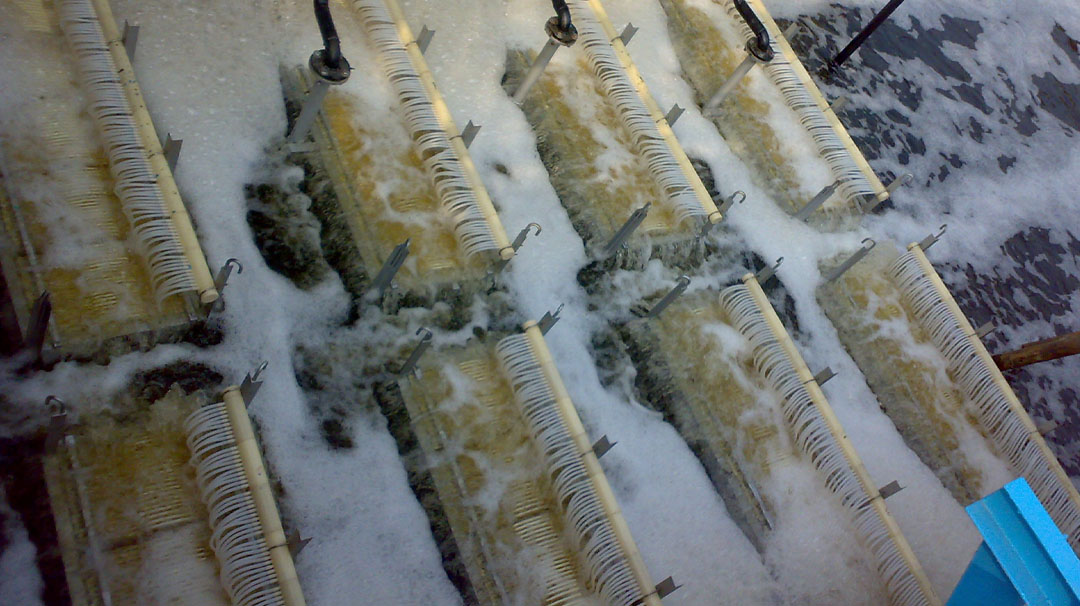
Municipal sewage treatment is a process to change wastewater from homes, business, and industry into an effluent that can be returned to the environment safely. The purpose of municipal sewage treatment is to protect public health and the environment from the adverse effects of wastewater discharge.
Municipal wastewater contains many pollutants that must be removed before the water can be discharged into lakes, rivers, or oceans. Among these pollutants are pathogens, suspended solids, nutrients, toxics, and energy. Pathogens are microorganisms such as viruses, bacteria, and protozoans that cause disease in humans and other animals. Suspended solids are pieces of materials such as grit, sand, clay, coffee grounds, and feces that remain in suspension in water. Nutrients are compounds such as nitrogen and phosphorus that promote plant growth. Toxics are poisonous compounds that may cause serious health problems or death in humans or other animals. Energy can be present in wastewater as heat or chemical pollutants such as oil and grease.
The MBR Membrane Bioreactor (MBR) is a sewage treatment process that combines membrane filtration with biological treatment to remove contaminants from wastewater. MBR technology is an advanced form of secondary treatment that can achieve effluent quality comparable to or better than tertiary treatment at a lower cost. MBR systems are more compact than conventional activated sludge systems and have the ability to treat a wide range of wastewater types including domestic sewage, food processing wastewaters, textile wastewaters, leachate from landfill sites, and industrial effluents.
A typical MBR system consists of a bioreactor where biological treatment takes place, a membrane filter where physical separation occurs, and pumps and controls for operating the system. Biological treatment removes contaminants from wastewater by using microorganisms to break down organic matter. The microorganisms use the organic matter for food and release carbon dioxide and water as waste products. Physical separation using a membrane filter removes smaller particles including suspended solids, pathogens, nutrients, and toxics from the water.
The MBR Membrane Bioreactor is essential in sewage treatment because it helps to remove contaminants from wastewater before it is discharged into lakes or rivers. MBR technology is an advanced form of secondary treatment that can achieve effluent quality comparable to or better than tertiary treatment at a lower cost. If you are interested in implementing an MBR system at your facility, please contact us today to learn more about this great technology!
About Jiangsu Peier Membrane
Jiangsu Peier Membrane Corp.,Ltd (Stock Code: 836744) was established in 2007 with a registered capital of 48 million Yuan, referred to as “Peier membrane industry”.
It is a high-tech enterprise focusing on the R&D, production, manufacturing and service of MBR flat sheet membrane products. Click to contact our Peier Membrane Experts.
Abuot Jiangsu Peier membrane
Jiangsu Peier membrane corp.,Ltd(Stock Code: 836744) was established in 2007 with a registered capital of 48 million Yuan, referred to as “Peier membrane industry”.
It is a high-tech enterprise focusing on the R&D, production, manufacturing and service of MBR flat sheet membrane products. Its Peier Product category as below:
- Flat Sheet Membrane Element
- Flat Sheet Membrane Element-Single Nozzle
- Flat Sheet Membrane Element-Double Nozzle
- Flat Sheet Membrane Element-3D Soft Support
- Flat Sheet Membrane Element-Renovated Membrane
- Flat Sheet Membrane Module
- Flat Sheet Membrane Module-Module-Single Nozzle
- Flat Sheet Membrane Module-Module-Double Nozzle
- Flat Sheet Membrane Module-2S(Double Deck)
- Flat Sheet Membrane Module-3S(High Flux)
- Flat Sheet Membrane Module-Mini Module
- MBR System
- MBR System-Laboratory Test Equipment
- MBR System-Pilot Equipment
- MBR System-Package System
Peier membrane always adheres to R&D and cooperation with well-known universities at home and abroad, such as Tsinghua University, Sydney University, Nanjing University of technology, Changzhou University and Jiangnan University.
It is the editor in chief of the national industry standard HY/T252-2018 “submerged flat membrane element for water treatment”.
At present, it has 6 invention patents, 46 new utility patents, 1 appearance patent and 4 software works.